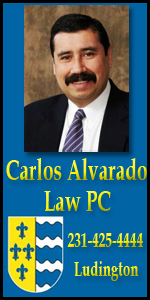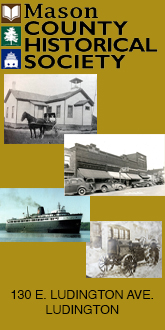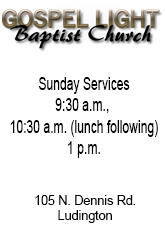
SS Pere Marquette 17, first car ferry purchased by the Pere Marquette Railway, under the supervision of Mercereau.
This Maritime History Blog is a presentation of the Mason County Historical Society’s Port of Ludington Maritime Museum, ludingtonmaritimemuseum.org, located at 217 S. Lakeshore Dr., Ludington.
By Rob Alway, Editor-in-Chief
The debut of the Pere Marquette 17 car ferry in 1901 marked a new era for the Ludington car ferries. It was also a testament to the Pere Marquette Railway’s new superintendent of water lines who led the operation for the next three decades.
The Pere Marquette Railway was formed in 1900 with the merger of the Flint & Pere Marquette, Chicago & West Michigan, and Detroit, Grand Rapids and Western (Detroit, Lansing & Northern) railroads.
The merger included the acquisition of the Flint & Pere Marquette Railway’s Ludington fleet consisting of the steel car ferry, the SS Pere Marquette (later called the Pere Marquette 15), and the break-bulk freighters (black boats), Flint & Pere Marquette Nos. 2, 3, 4, and 5. The merger also included the acquisition of the wooden car ferry SS Muskegon, formerly called Shenango No. 2. The SS Muskegon was moved from its port in Muskegon to Ludington upon formation of the new company and was renamed the PM 16.
The entire PM fleet was actually renamed in a manner similar to the numbering of locomotives. Car ferries were numbered 15 and above, break-bulk freighters were numbered 5 and lower and the eventual addition of river ferries on the Detroit and St. Clair rivers were numbered 14 and below. Interestingly, though the SS Pere Marquette was immediately referred to as the “15”, it did not receive that designation officially until 1924.
Much of the credit of the success of the Pere Marquette’s ferry operation can be given to William Mercereau. While he is not responsible for developing car ferry service, he was the man who ushered in major expansion of the fleet, and led the steamship operation for three decades.

W.L. Mercereau in his younger years.
William Lincoln Mercereau (1866-1955) served as superintendent of the PM car ferries for 31 years. He began his role of leading the Flint & Pere Marquette car ferry fleet in 1898.
Mercereau was born on June 9, 1866 in Union, New York, the son of Seymour and Mary Mercereau. According to his obituary, published on June 24, 1957 in the Ludington Daily News, he spent some of his youth in Montana and Idaho. He then obtained a job as a locomotive fireman working for the Flint & Pere Marquette Railway. Census records show him living in Saginaw in 1887, which was the base of the F&PM.
Mercereau married Lulu May Timberlake (1872-1955) on July 14, 1894 in Cook County, Ill. They did not have any children.
After a year and a half in that job, he moved to Ludington and became a purser on the F&PM break-bulk freighters based in Ludington, which began service in 1875, a year after the F&PM arrived in Ludington, its eastern terminus.
Break-bulk freighters were the predecessors of the car ferries. Freight would be unloaded from rail cars at the dock, loaded onto the ships and transported across Lake Michigan. Then, they were loaded onto rail cars waiting at the other shore.
“He remained in this service for a few years, then went to St. Louis, Mo., to augment his education,” his obituary read. “There he was graduated from a business college, after which he returned to Saginaw as a special assistant in the F&PM general office.”
In August, 1899, Mercereau was ordered to Ludington on a special assignment. A few weeks later he was named superintendent of the carferry operations.
Mercereau followed five others who had the job before him, first overseeing operations for the Flint & Pere Marquette Railway and later the Pere Marquette Railway, established following a merger in 1900.
The Ludington Record-Appeal published a series of articles about the cross-lake service in 1904.
Sanford Keeler (1837-1924) was reported by the newspaper as being the first superintendent of marine affairs for the F&PM, starting in 1882. He operated out of corporate headquarters in Saginaw. Prior to that time, the F&PM contracted shipping out, mainly to the Goodrich Transit Company.

Keeler Sanford
Sanford came to Saginaw with his two brothers, Dexter and Frank on Oct. 11, 1855, at the age of 17. He grew up in Broome County, New York, located in the middle of the state. At the age of 21, in 1859, he had worked at the East Saginaw Salt Manufacturing Company as an engineer and an operator of the company’s salt brine drilling rig. He was successful at drilling the first salt brine well in Michigan, sparking a new industry in Saginaw to offset the downturn of lumber.
He was enlisted by Henry Potter and Samuel Farwell, builders of the F&PM, as an locomotive engineer. He was later promoted to mechanical engineer of the railroad. In 1873, he was named superintendent of the railroad, a year before the tracks reached Ludington. He continued in that position until 1891, which included the start of cross-lake service.
In 1892, E.M. Wratten was assigned as superintendent of water lines for the F&PM and was the first to be based in Ludington. His tenure in that position only lasted about 18 months and he was then sent to Bay City, where he came from, to work as an agent for the railroad.
“Mr. Keeler was a shrewd, far-sighted man in the world of commerce and transportation, but he had no practical qualifications which fitted him for the immediate management of steamboats,” a Ludington Record-Appeal article stated. “As a matter of fact, this department in the early days was directed almost absolutely by Capt. John Duddleston, whose word and will on matters pertaining to marine was law.”
Duddleston served as captain of several F&PM ships including Flint & Pere Marquette Nos. 2, 3, and 4.
Editor’s note: The article from the Record-Appeal refers to a Mr. Wheeler without prior reference. It is assumed that this may have been a type-O and had meant to refer to Mr. Wratten instead. It may have inadvertently mixed up Wratten with F.W. Wheeler & Co., which was the shipbuilder that built the SS Pere Marquette. When quoting the article, I will place Wratten in parenthesis.
“However, it will always stand to the credit of (Mr. Wratten’s) discerning judgement that he was the first man to foresee and foretell the vast changes which were to mark the development of the F&PM steamboat business. More than 20 years ago the railroad superintendent made the confident but rash prediction that the time would surely come when the company would successfully carry loaded cars across Lake Michigan.”
F.E. Parker took the helm of the F&PM ships from 1893 to 1894 and was then replaced by J.W. Martin.

PM 3 (formerly F&PM No. 3)
The Record-Appeal referred to Martin’s appointment as “an event which marked the real beginning of a period of wonderful achievement for the F&PM Railroad company.”
The newspaper refers to Martin as a captain, but he is not listed on any of the rosters of the early ships. He may have come from a different shipping company, however.
“Up to this time practically nothing had been done to develop the immense field of latent freight business which lay within reach of the railroad people. Himself a sailor and the holder of master’s papers, Captain Martin was just the man for the time and place. He brought to the marine affairs of the F&PM company both the practical and theoretical knowledge of steam boating necessary to a successful management, and moreover possessed the peculiar faculty of spreading his enthusiasm and convincing others of the feasibility of his plans.
“In reality, Captain Martin was the founder of the Pere Marquette carferry institution.”
Martin is credited with developing the steel car ferry. Credit to the creation of car ferry service goes to the Ann Arbor Railroad, which had established ferry service out of Frankfort/Elberta in 1892 with the introduction of the wooden Ann Arbor No. 1. But, the Flint & Pere Marquette Railway introduced the first steel car ferry, the Pere Marquette, in 1897, under Martin’s leadership.
The Pere Marquette (later known as the Pere Marquette 15) was launched on Dec. 30, 1896. It made its maiden voyage from Ludington to Manitowoc the evening of Feb. 16-17, 1897, carrying 22 freight cars and the private car of S.T. Crapo, general manager of the Flint & Pere Marquette Railway. It was 337 feet long, 56 feet wide and had a depth of 17 feet. It was built by F.W. Wheeler & Co. in West Bay City, Mich. (now part of Bay City). It had two compound steam engines operated by four Scotch boilers. Its car deck had four tracks and could hold up to 30 rail cars.

SS Pere Marquette 15 (formerly SS Pere Marquette)
The introduction of a ship that could carry railcars across Lake Michigan did not come without consequences. Prior to the Pere Marquette, the railroad’s fleet consisted of four break-bulk freighters, known as the black boats (Flint & Pere Marquette Nos. 2, 3, 4, and 5). This operation required 400 to 500 men to work as freight handlers. The car ferry drastically reduced the need for such a labor force.
“The 400 to 500 freight handlers who had found profitable employment transferring freight on the Ludington docks were dismayed at the prospect of losing their jobs by the introduction of this great labor saving machine.”
The introduction of the Pere Marquette resulted in labor strikes, boycotts and threats of violence, resulting in the F&PM sustaining heavy financial losses for a couple of winters.
The labor issues paid a toll on Capt. Martin’s health, according to the Record-Appeal.
“Overcome by the severe strain incident to his work in connection with the first strike of the freight handlers, Capt. Martin was taken suddenly ill and died in a Milwaukee hospital March 21, 1897.”
Martin was succeeded two months later by A.H. Hawgood, who had served as a ship’s wheelsman in Cleveland.
“Mr. Hawgood was a master and with all a practical marine man, but he was not in full sympathy with the carferry idea then being exploited by the F&PM company, hence his stay here as superintendent was a short duration.”
The railroad then placed Robert Bruce, a former chief engineer, in charge of the ships. He apparently was not very well liked and his tenure was short.

William Lincoln Mercereau in later years.
“Bruce was a man of surly temperament, narrow minded and profoundly ignorant of all matters appertaining to the steamboat business outside the engine room. But it took the officials of the road more than a year to discover Bruce’s incompetence for the work, when he was promptly discharged and replaced by the present incumbent serving under the old title of superintendent.”
As stated above, in August, 1899, William Mercereau was ordered to Ludington on a special assignment, which was likely to fill in for Bruce’s departure. A few weeks later he was named superintendent of the carferry operations.
“When W.L. Mercereau accepted the superintendency in August of 1899, the affairs of the marine department were in a sadly demoralized condition,” the 1904 Ludington Record-Appeal article reported. “But few records had been kept and the word ‘system’ has been stricken boldly from the marine vocabulary. Freight offerings were gradually wandering as the result of the company’s inability to properly execute carrying contracts because of the labor troubles at Ludington, the boats were in need of thorough overhauling, and in short the entire operating schedule of the steamboat line needed reorganization and the injection of authority and business method into its daily life.”
Mercereau, the Record-Appeal article stated, set about with directness and determination.
“A master of business detail and office work, he soon brought order out of chaos and organized the business channels of his department on the model working basis which obtains today.
“The four and one-half years of Mr. Mercereau’s superintendency have been by far the most eventful in the history of the company’s steamboating.”
One of his first tasks was to oversee the rebuilding of the stern of the PM 2, a break-bulk freighter, at Manitowoc in 1900.

Pere Marquette 17
New fleet of car ferries
One of Mercereau’s first tasks was the development of four new car ferries, beginning with the Pere Marquette 17, the company’s second steel ship. The PM 17 was just one foot longer than the PM 15 at 338 feet, the same width at 56 feet and a depth of 19 feet, two more than the PM 15.
Like the PM 15, PM 17 was designed by naval architect Robert Logan. It was built at American Ship Building Company’s Globe Works in Cleveland at a cost of $340,000. It was powered by two triple expansion steam engines with four Scotch boilers totaling 2,300 horsepower. It could reach speeds of 14 mph. Its car deck had four tracks and could hold up to 30 rail cars. The ship weighed 2,775 gross tons.
Unlike the PM 15 and the PM 16, the PM 17 had a considerable upgrade in passenger accommodations, that were designed with input from Mercereau.
“This part of the boat was planned entirely by Mr. Mercereau who throughout the period of the boat’s construction was almost constantly at the Cleveland shipyard, where he obtained a thorough knowledge of every detail and instigated many minor improvements in construction and equipment,” the 1904 Ludington Record-Appeal article stated.

PM 18 on excursion in Chicago. The only Ludington car ferry to sink.
The PM 17 had 18 staterooms, a spacious main cabin and a comfortable smoking room.
The ship was launched on Saturday, May 25, 1901. On her maiden voyage she arrived at Ludington on Friday, Aug. 21, 1901 under the command of Capt. Peter Kilty with Albert W. Ackerman as chief engineer.
Capt. Joseph Russell took command of the ship in 1902 as Kilty was moved to the new flagship, the PM 18.
Under the leadership of William Mercereau, the Pere Marquette built a total of nine car ferries: Pere Marquette’s 17 (built in 1901), 18 (II)(1902), 19 (1903), 20 (1903), 18 (1911 – the first PM 18 sunk on Sept. 9, 1910), 21 (1924), 22 (1924), City of Saginaw 31 (1929), and City of Flint 32 (1929). He also sold off the break-bulk “black boats.” Because of his management, the PM Fleet became the largest car ferry fleet on the Great Lakes, building the legacy of what eventually became the Chesapeake & Ohio (C&O) fleet. He also developed a fleet of car ferries that worked on the Detroit River: International (II) (built in 1872 and later purchased from Grant Trunk by the PM), Pere Marquette 14 (1904), and PM 12 (1927).
Mercereau is also credited with the development of the Ludington channel.
In 1904, Mercereau asked Phillip Snorback of Muskegon to take a look at the harbor and consider its future development. Snorback was interested in harbor development and, with Mercereau, toured the harbor. Mercereau noted at the time that Grand Haven was receiving $1 a ton in federal aid and Ludington was getting three cents.
Mercereau and Snorback sent their report to Stanley Carpo, general manager of the PM Railway and from there the report went to Washington.

Building the Ludington breakwater
In 1906, the United States Congress appropriated $840,000 for development of the harbor and in 1907 the contract was let to Snorback, who had formed a supervisory company. Greiling Bros. of Green Bay did the actual construction work.
Greiling Bros. first constructed wooden cribs in the Buttersville area and towed them into position, starting with the south breakwater. The first crib was sunk July 5, 1908, and when 800 feet of the south breakwater had been completed the remainder of the construction was left open until an equal amount could be completed on the north breakwater.
The last crib was sunk April 22, 1911, nearly three years after the first and the wooden breakwaters, later replaced by concrete abutments, were ready three years later.By its completion in 1914, the harbor had developed into a project that cost nearly $1.5 million.

Car ferries PM 15, 17, 18 (II), and 19 in 1913.
On July 4, 1914, the city staged a huge celebration to mark the official opening of “The Million Dollar Harbor.”
“It was his almost single-handed persistence which brought Ludington its present million dollar harbor development with protecting breakwater arms and other facilities which today make it one of the finest harbors on Lake Michigan,” Mercereau’s obituary stated.
Mercereau also played a larger role in Lake Michigan car ferry operations during World War I. He was named manager of all Lake Michigan carferry services when the federal government took over all the operations during World War I, which was relinquished in 1920. This included the Grand Trunk Railway operations in Grand Haven and Muskegon and the Ann Arbor Railway operation in Frankfort/Elberta.

Mercereau at the age of 90.
In 1931, Mercereau retired due to failing eye sight. That same year he and Lulu moved to Dunedin, Fla. near Clearwater where they remained the rest of their lives, coming back to Ludington to visit in the summers.
Lulu Mercereau died in 1955 and William Mercereau died on June 22, 1957 at the age of 91. They are buried at Sylvan Abbey Memorial Park in Clearwater, Fla.

SS City of Flint 32 was the Ludington last car ferry built under Mercereau’s leadership.
Photos that appear in this article are from the Mason County Historical Society Rose Hawley Archives.

The Mason County Historical Society is a non-profit charitable organization that was founded in 1937 that does not receive any governmental funding. It owns and operates the Port of Ludington Maritime Museum in Ludington, Historic White Pine Village in Pere Marquette Township, and The Rose Hawley Archives and the Mason County Emporium and Sweet Shop in downtown Ludington.
The Port of Ludington Maritime Museum, located at 217 S. Lakeshore Dr., Ludington, is currently open Thursday through Saturday from 10 a.m. to 5 p.m. until Tuesday, May 27 when it will be open Tuesday from 11 a.m. to 7 p.m. and Wednesdays through Saturday from 10 a.m. to 5 p.m.
For more information about donating to and/or joining the Mason County Historical Society, visit masoncountymihistory.org.
_____________________
Please Support Local News
Receive daily MCP and OCP news briefings along with email news alerts for $10 a month. Your contribution will help us to continue to provide you with free local news.
Payment can be made monthly via credit card, bank account, PayPal or Venmo through recurring email invoicing. These payments can be set up for autopay each month.
To sign up, email editor@mediagroup31.com. In the subject line write: Subscription. Please supply your name, email address, mailing address, and phone number (indicate cell phone). We will not share your information with any outside sources. For more than one email address in a household, the cost is $15 per month per email address.
Alternative methods:
PayPal Monthly Payment. Click this link.
We can send you an invoice for a yearly payment of $120, which you can conveniently pay online or by check. If you are interested in this method, please email editor@mediagroup31.com and we can sign you up. You can also mail a yearly check for $120 to Media Group 31, PO Box 21, Scottville, MI 49454 (please include your email address).
Payment must be made in advance prior to subscription activation.
We appreciate all our readers regardless of whether they choose to continue to access our service for free or with a monthly financial support.
_____
This story and original photography are copyrighted © 2025, all rights reserved by Media Group 31, LLC, PO Box 21, Scottville, MI 49454. No portion of this story or images may be reproduced in any way, including print or broadcast, without expressed written consent.
As the services of Media Group 31, LLC are news services, the information posted within the sites are archivable for public record and historical posterity. For this reason it is the policy and practice of this company to not delete postings. It is the editor’s discretion to update or edit a story when/if new information becomes available. This may be done by editing the posted story or posting a new “follow-up” story. Media Group 31, LLC or any of its agents have the right to make any changes to this policy. Refer to Use Policy for more information.



















































.png)

